Pol Espargaro’s decision to take up Honda’s offer for 2021 even before the 2020 campaign had begun probably helped spare KTM from having to make a really awkward decision.
The Mattighofen firm would of course have been far from delighted to lose its top points-scorer in each three (and make that four at the end of 2020) of its full-time MotoGP campaigns so far, but his departure meant Miguel Oliveira’s publicised frustration at Brad Binder being promoted over him could be resolved with minimal angst.
Oliveira passed up the opportunity to take Johann Zarco’s vacated RC16 for last year, but clearly did so under the assumption it would go to someone like Mika Kallio, rather than a rookie out of Moto2 in Binder. He then struggled to hide his frustration at Binder seeming to jump ahead of him on the KTM career ladder, and would’ve presumably found it even harder to spend another year as a satellite rider had Espargaro stuck around.
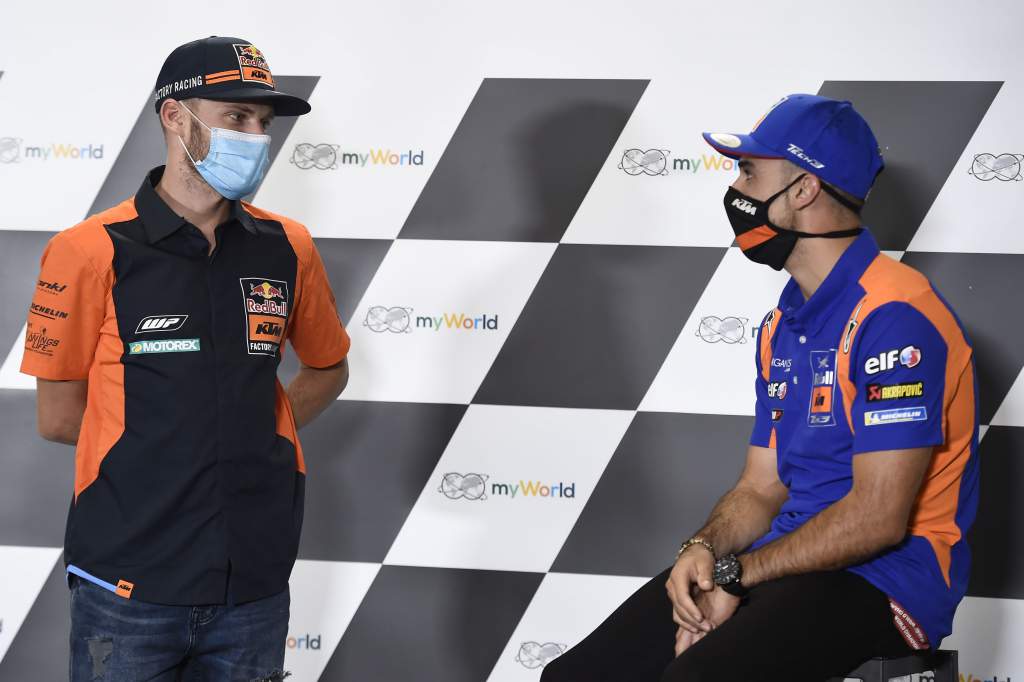
In saying all that, the departure of the affable Spaniard – the man who has basically embodied KTM’s MotoGP project and been its most vocal cheerleader during the leaner times – leaves a big hole to be filled. And with the way motor racing is – and the way its media is – Binder and Oliveira will be pitted head-to-head for the role of Espargaro’s successor from the very first day of pre-season testing.
It won’t be a particularly new feeling for either Oliveira or Binder, as both have spent a fair share of seasons within KTM’s rider system – and have been team-mates in 2015 and 2018.
Throughout their careers, it was the case that Oliveira, who is half a year older, was usually further along the pathway to MotoGP than Binder. However, the South African has long seemed a better bet for MotoGP glory.
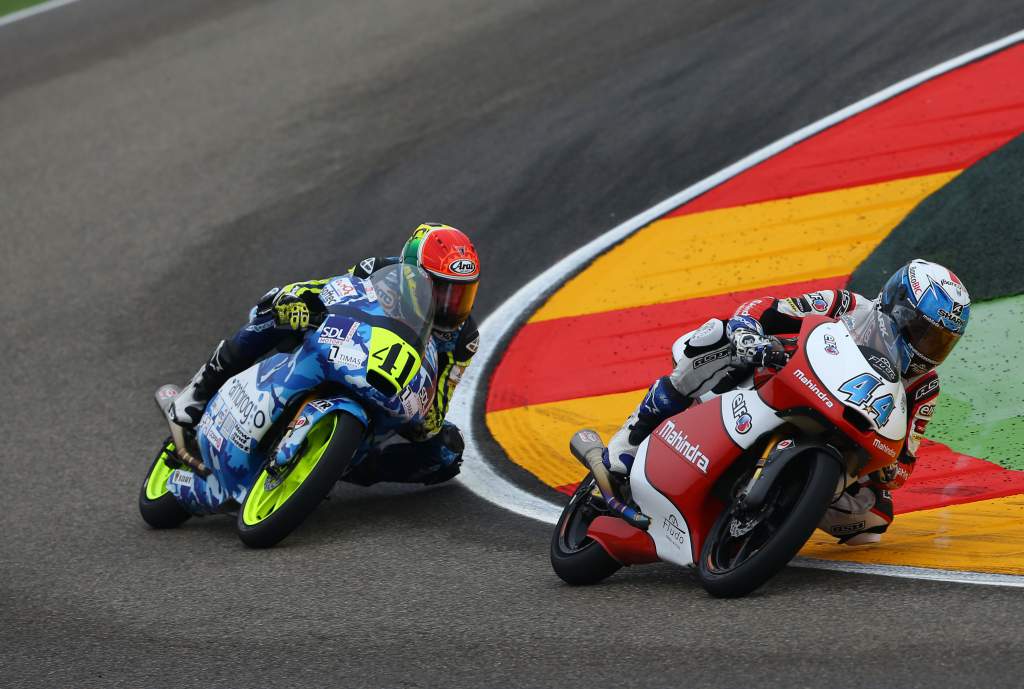
While Oliveira was a narrow Moto3 runner-up to Danny Kent in 2015, Binder thoroughly dominated the category a year later. While Oliveira was nine points off the title in his third year of Moto3, Binder was three points off at the same stage of his third campaign – and this was despite being hampered by an initially uncompetitive KTM Moto2 package at the start of that 2019 season.
Binder got seven Moto3 wins to Oliveira’s six and eight Moto2 wins to Oliveira’s six. And when they finally met up in MotoGP, it was Binder who grabbed KTM’s first-ever premier-class victory – and in truly confounding style too, winning by five seconds at Brno from seventh on the grid in only his third MotoGP start.
True, Oliveira needed just two more races to get on the board, capitalising from Espargaro and Jack Miller’s final-lap duel at the Red Bull Ring, but it was a less emphatic win, in his 30th MotoGP start rather than third. As the campaign wound down, though Oliveira was outscoring Binder over the course of the season, it was definitely the latter who seemed KTM’s flagship rider of the future…
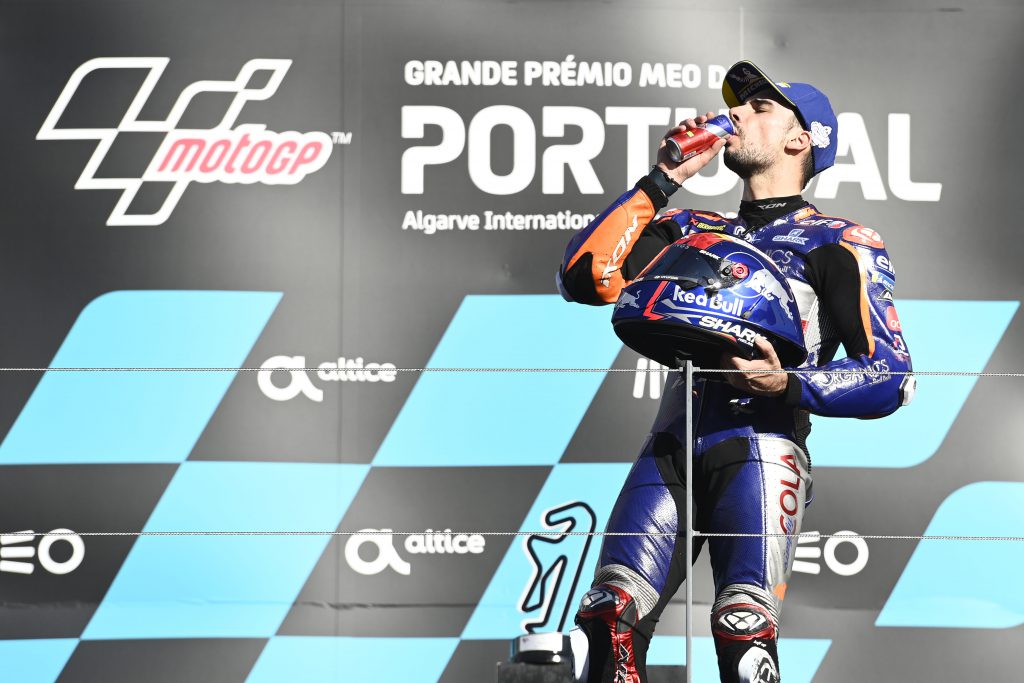
And then Portimao happened. At his home race, Oliveira ended practice as the likely favourite and dealt with the pressure magnificently, sticking his RC16 on pole and leading every lap en route to a processional win, which proved once and for all he can absolutely hack it as a MotoGP frontrunner.
The Portimao finale tipped the scales in Oliveira’s favour in his 2020 match-up with Binder, that until then looked pretty dead even – and thus would’ve enhanced Binder’s reputation, as he was in his rookie season unlike Oliveira.
Oliveira and Binder compared in 2020 (laptimes adjusted for 90-second lap)
| Oliveira | Binder | |
| FP ahead* | 10 | 4 |
| FP advantage* | 0.070s | |
| Q ahead | 8 | 6 |
| Q advantage** | 0.077s | |
| R laps quicker | 45.0% | 54.6% |
| R laps advantage*** | 0.026s | |
| Wins | 2 | 1 |
| Points | 125 | 87 |
* by fastest laptime across FP1, FP2 and FP3
** only qualifying sessions both contested
*** trimmed average
In itself, the Portuguese GP didn’t completely alter the numbers at play. Oliveira came out on top in their head-to-head in qualifying, and was usually quicker on combined practice times from FP1, FP2 and FP3.
Binder was on average quicker in qualifying sessions they both contested, yet this was clearly skewed by several occasions where Oliveira progressed directly to Q2 and Binder didn’t make it out of Q1.
However, the South African showed an ever so slightly quicker turn of pace in races – at least when both he and Oliveira stayed on the bike. Of the 229 laps in question (excluding opening laps as the bikes travel an unequal distance), in 125 of them Binder was quicker than Oliveira, with the opposite true in only 103 cases. Eagle-eyed readers will note that this comes out to a total of 228 laps, i.e. one short – but this was because there was a lap in the Styrian GP, pre-restart, where the pair were matched to the thousandth.
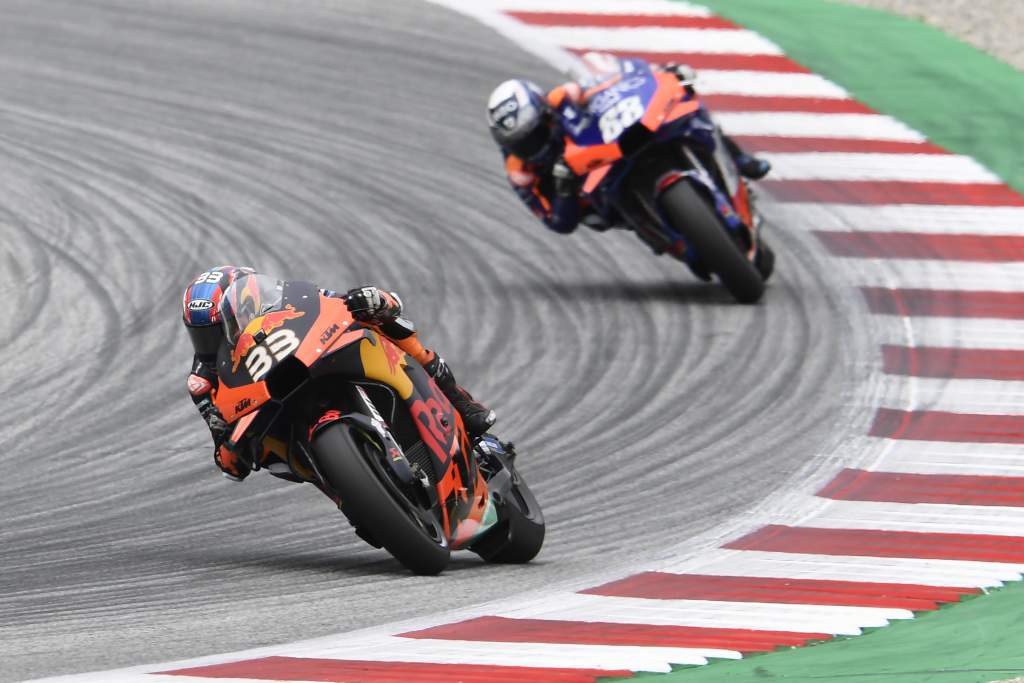
This yields a tiny advantage for Binder on average race pace, with the calculated mean presented in the table actually representing a laptime-adjusted trimmed average – we’ve cut off 5 percent of data at each end to account for outliers, like laps in which one of the riders served a penalty or fell.
There is a major caveat to the outcome, too: Binder retired after just two laps in Portimao, and thus most of the laps from Oliveira’s best race are not part of the result.
But overall, for this writer’s money, all of the above evidence adds up to a ‘too close to call’. For starters, the margins are hilariously tiny. It’s not that there weren’t weekends where Binder or Oliveira were head and shoulders above the other – there were, in abundance – but the spread proved pretty even.
And while Binder gets credit for this being his rookie year, he was in the works team while Oliveira was riding the satellite RC16. And if you’re not convinced that’s much of an argument based on other manufacturers in 2020 (Takaaki Nakagami versus the works Hondas, Franco Morbidelli versus the works Yamahas, Jack Miller versus the works Ducatis), the other point in Oliveira’s favour is that Binder made more costly errors, as a rookie is wont to do. Those errors included eliminating Oliveira himself at Jerez, and Jack Miller at Aragon.
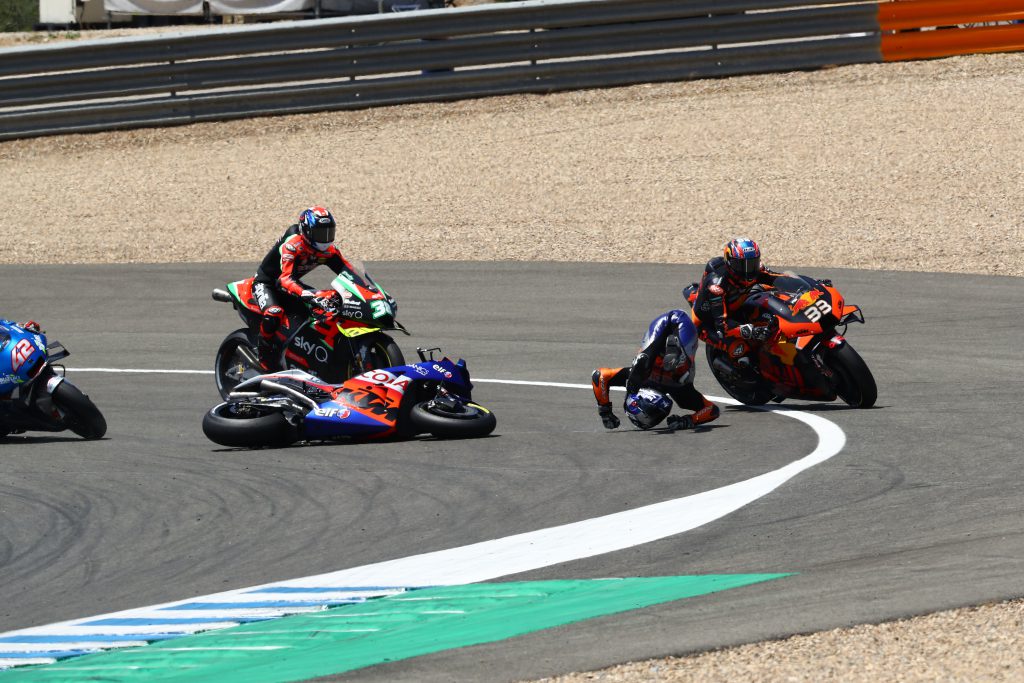
In both of their two seasons as KTM Ajo team-mates in the lower classes, Oliveira beat Binder by nearly 100 points. It’s a safe bet this will not happen next year – but it’s also a decently safe bet that both of them don’t quite know what to expect. Will Binder make a huge step in his sophomore MotoGP campaign, like Oliveira did in 2020? Or was Oliveira’s Portimao domination informative of the kind of rider he’s now become?
What we can be pretty certain of is that the answer will have big ramifications for MotoGP. The 2020 KTM RC16 wasn’t quite a bike good enough to win the title, but it was a three-time race winner and absolute lightyears ahead of the 2019 version.
If KTM produces even half as big a step for 2021 – or if it figures out a way to make the RC16 work on tracks where it’s gone missing last year, the battle between Oliveira and Binder is bound to take on a much bigger significance than a simple intra-team duel.







